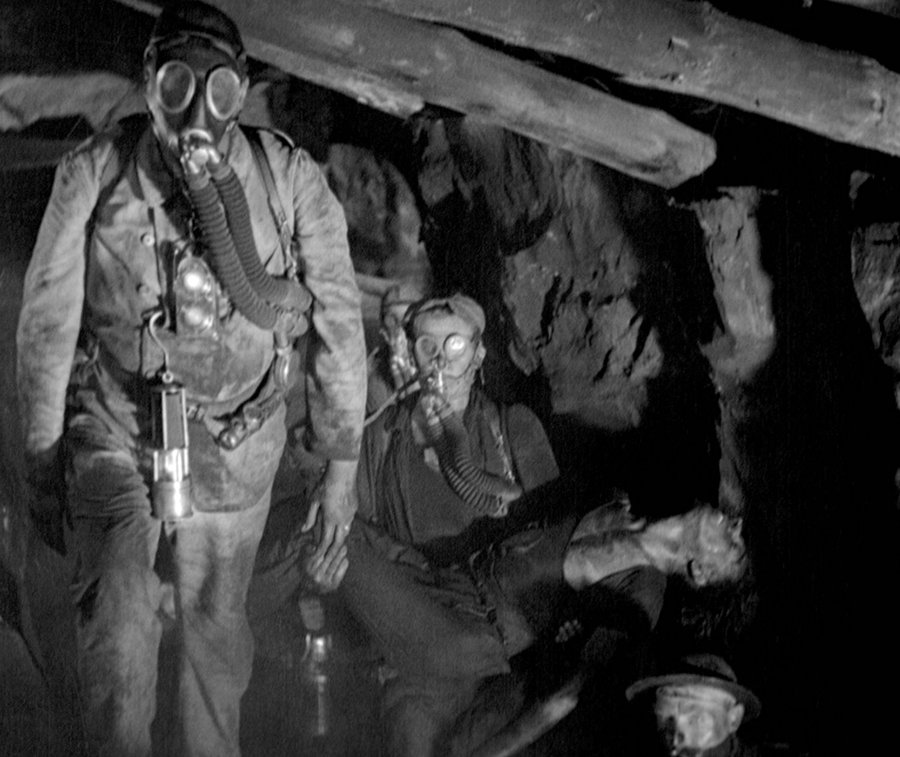I attended this screening at the Friends Meeting House in Brighton last night, as part of a series of screenings hosted by OpenColour. They obviously care deeply about film, and deserve any serious filmgoers support and attention. It was an honour to attend and I feel lucky to have been there. Information can be found here: http://www.opencolour.co.uk.
Step one is acknowledging that art typically reflects the time in which it is made. Step two is coming to the (depressing) realisation that whilst the specifics change, the conflicts of decades ago remain important today and we are never so far away from the past as to think ourselves above it. It is clear that last night’s screening of G.W Pabst’s Kameradschaft was a pointed statement on the UK’s impending exit from the EU, telling as it does a story of French miners working on the border, a fire and collapse in the mine that left the workers stranded, and German workers crossing that border to provide aid in a time of crisis.
As such, despite the film being nearly 90 years old, it retains a relevance that has been sustained in the decades since it was released. This is not to say that the film is ‘more relevant’ now; simply that the lessons the film can teach us have not diminished as we have become more enlightened.
The film reflects the upswing in modernity and the nature of physical labour, alongside the moral and traumatic consequences of the war just been and the war to come. The soundtrack clatters and bangs with the sound of industry and bustle, of drills, of piles of coal. Adolf Jansen’s soundscape is at once immersive and offputting, a stark reminder of the conditions of miners and all-consuming nature of labour. In conjunction with Erno Metzner’s convincingly realised sets, the film creates a well-defined cinematic space that aims for an accentuated realism over something excessively stylised. From the opening of young children playing in the dirt, to the early scenes set in the mining town, down to the thrilling sequences set in the mine, this is an organic and convincing work.
Each scene is composed with a simple geometry; the humans of Pabst’s film usually fill two thirds of the screen, with the telephone wires and mining towers jutting into the skyline, a canny and repeated visual metaphor for the then-ongoing expansion of modernity. When cinematographers Robert Baberske and Fritz Arno Wagner move the camera, it is with a sense of scope, surveying the crowds of distraught wives and girlfriends at the gates of the mine, and of the process of coal being shovelled, with equal brevity.
The film also predates the modern ensemble disaster film, in that there are no main characters, and we only learn a select few of the character’s names at all. Instead, individual scenarios are composed with such splinter-like precision that we know who everyone is without having to be spoonfed verbal cues. The young woman racing back; the three German men, nervously over the border, trying to get a French girl to dance with them; the grandfather dangerously entering the mine to rescue his grandson; the German workers racing through the border to help. Through these images and situations Pabst creates a stirring and at times incredibly emotional film, distilling what could have been melodrama into a series of recognisable human traits and qualities.
Ultimately, Pabst appeals to our better, collective natures, and despite the fact that we seem to have learned very little since this film was made, it is possible to watch this film and be optimistic. It’s simplicity and clarity strip away the accoutrements of the century that was to follow; the conflict takes precedence, and in doing so clears away any fog or ambiguity. The very image of workers coming together is a deeply stirring one, which Pabst knows the power of.
Yes, Pabst says, we should help one another. Isn’t it obvious?
